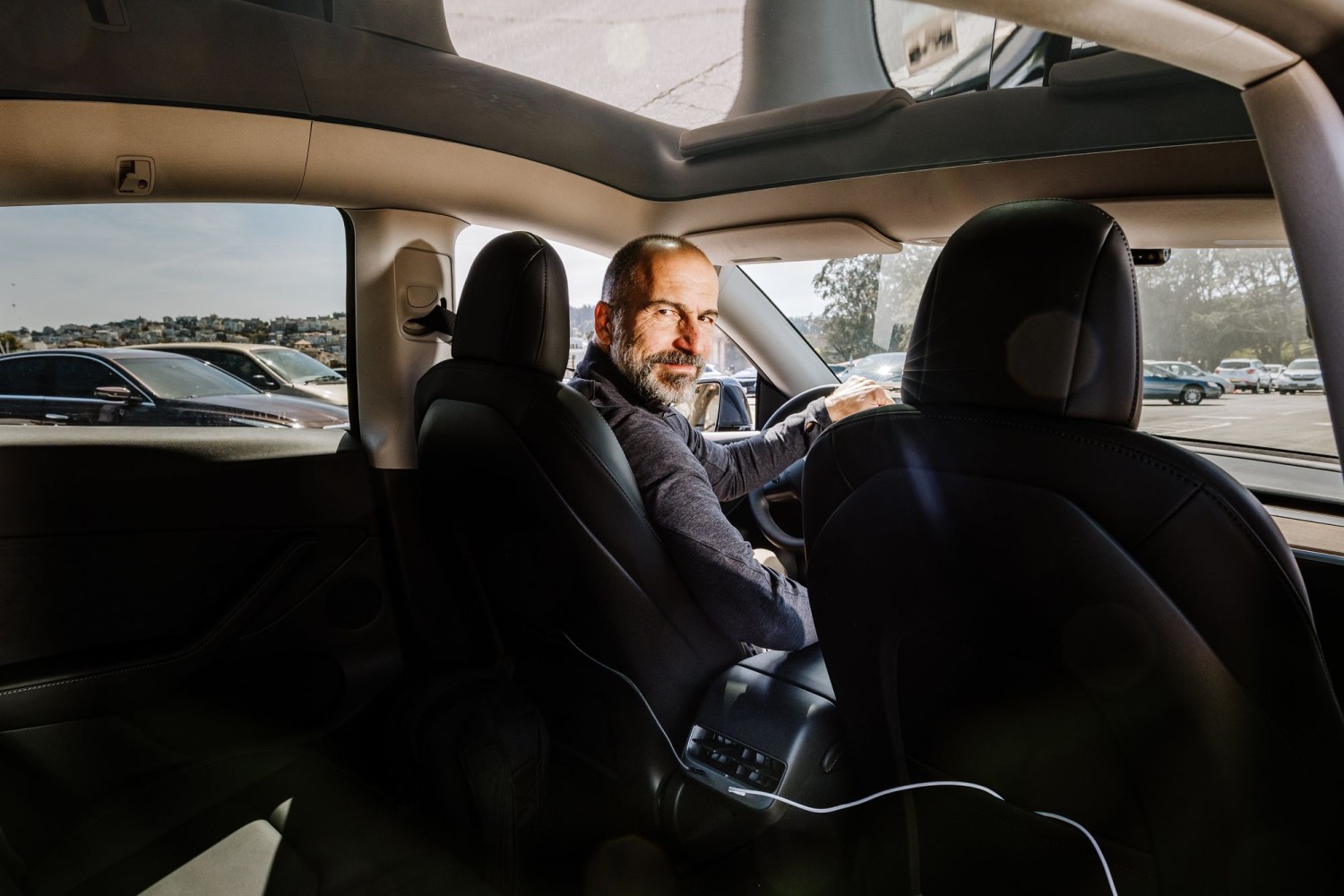
This article is more than
10 year old“Using the local taxi companies ranges from inconvenient to simply impossible,” says the Boston-based CEO of Project Lever, which matches students with academic advisers. “I almost never have their local phone numbers, and calling in advance would require having a local sim card in a lot of cases.”
Even when she travels to domestic destinations such as New York City, she opts for a ride-hailing service.
“I found that normal cabs have an awful quality of service,” she says.
More and more business travelers such as Dotsenko are choosing services such as Uber and Lyft over taxis and rental cars, according to a report by Certify, a travel expense management software company. In the third quarter of 2016, for the first time, ride-hailing services made up the majority of receipts in the ground transportation category.
In the three-month period that ended in September, Certify studied more than 10 million ground transportation receipts primarily in North America. Uber and Lyft accounted for 52% of them. Uber was the most popular of the two, with 48% of receipts vs. Lyft’s 4%.
A year ago, in the same quarter, ride-hailing services accounted for 34% of receipts, taxis for 22% and rental cars 44%.
“We continue to see interest in the ride-sharing economy,” says Robert Neveu, CEO of Certify. “Small to medium businesses were the early adopters. Now, more Fortune 500 companies are adding them to approved vendor lists.”
Taxi use is down 63% since the first quarter of 2014, according to Certify’s quarterly SpendSmart report.
Ride-hailing apps have become so popular that even other travel companies are aligning themselves with them. For instance, Starwood Hotels and Resorts, which was recently acquired by Marriott International, lets frequent guests link the Starwood Preferred Guestapp with Uber to earn points for every ride.
Hilton Worldwide and InterContinental Hotels Group also have similar partnerships.
Travelers say they also like features of the ride-sharing apps that allow them to track the cars before arrival and during the trip.
“I find that the drivers arrive more quickly and reliably, and the rides are generally less expensive, unless it is a surge pricing time,” says Madeline Enos, a media relations specialist for Softwareadvice.com. “I like being able to see the location of my driver on the app as they get closer to pick-up.”
Debora Mitchell, president of a marketing consultancy in Scottsdale, Ariz., says she prefers Uber or Lyft over taxis because, in her opinion, the cars are newer and cleaner and the drivers are more social and knowledgeable about their cities.
“Unlike many taxi rides in my experience, I never feel as if I'm getting the run-around or getting duped into paying a higher fare,” she says.
She also likes that they can pick up at many airports.
But most of all, she prefers them because she has had exceptional drivers. One time, late at night, she left her purse, with her cellphone, in the back seat of an Uber. She didn’t realize it until an hour later.
“Panic set in. What to do? I got to a computer, logged into my account and contacted the driver,” she says. “It said to expect a response usually within 24 hours. … I received an immediate response, and the driver brought it back to me that night, all my credit cards and cash still in the wallet.”
Jake Steward, an operational director at a college study abroad program in Sarasota, Fla., says using Uber makes completing his monthly expense reports easier.
“The Uber app saves every trip with a map of the route you have taken, the card you used to pay and the date and time when you took the trip,” he says. “No more hanging on to poorly printed taxi receipts.”
He also likes that before you commit to a ride, you can get an estimate to make sure it is truly cost-effective.
Some travelers say it is not always the cheapest option.
Elizabeth Avery, founder of Kalorama Capital, an investment bank, says she does a price comparison before settling on a mode of transportation.
“On one occasion, I had a pricey surge quote from Uber more than a taxi so I opted for the latter,” she says. “It is key as a result to watch out for surges and be sure that you use the most economical version of Lyft or Uber.”
Neveu says companies have to be cautious about their employees' use of ride-hailing apps.
Unlike taxis, the apps have surge pricing and different prices for different types of vehicles. Uber, for instance, has Uber X, a regular car; Uber XL, a larger car; UberSelect, a luxury sedan; and UberBLACK, executive luxury service.
There are also ride-sharing options that cost less but mean that travelers have to spend more time in the vehicle as drivers pick up others.
“When you take a taxi, it’s a fixed rate for that city,” Neveu says. “When you get ride sharing, there are multiple standards of service. In hotels, you get a standard room or a suite, you fly coach or business class. It’s becoming similar.”
Neveu expects to see companies address that in the future.
“I think there are going to be extended policies around those,” he says.